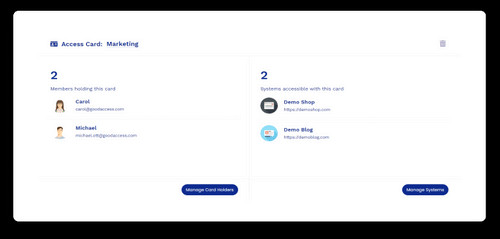In today’s digital landscape, safeguarding your online assets is paramount. Businesses and individuals alike are constantly seeking robust methods to protect their software, systems, and sensitive data from unauthorized access. One effective technique in this arsenal is IP whitelisting. But What Does It Mean To Whitelist A Server, and how does it bolster your security posture? Let’s delve into this essential concept.
Understanding IP Whitelisting for Servers (H2)
At its core, whitelisting a server involves creating a list of trusted IP addresses that are explicitly granted access to your server and its resources. Think of it as a digital VIP list for your server. Only the IP addresses on this “whitelist” are permitted to connect, while all others are automatically denied. This approach contrasts with “blacklisting,” which blocks specific IPs but allows all others by default. Whitelisting operates on the principle of “deny all, except those explicitly permitted,” offering a far more secure and controlled environment.
To understand this better, consider how servers communicate online. Every device connected to the internet is assigned a unique Internet Protocol (IP) address, acting as its digital identifier. When you whitelist a server, you are essentially telling your server’s security system to only recognize and communicate with specific, pre-approved IP addresses.
Why is Server Whitelisting a Smart Security Move? (H2)
Implementing IP whitelisting offers numerous security advantages, making it a valuable strategy for various scenarios:
Enhanced Access Control & Security (H3)
The primary benefit of whitelisting is its granular control over who can access your server. By limiting access to only known and trusted IP addresses, you significantly reduce the attack surface available to cybercriminals. Unauthorized users and malicious actors from unknown IPs are effectively blocked from even attempting to connect to your server, regardless of their passwords or other credentials.
Mitigation of Cyber Threats (H3)
Whitelisting acts as a strong defense against various cyber threats, including:
- Brute-force attacks: Hackers often use automated tools to try numerous password combinations to gain access. Whitelisting drastically reduces the risk by preventing connections from suspicious IP ranges known for such attacks.
- Unauthorized access attempts: If someone outside your trusted network attempts to access your server, whitelisting will block them, preventing potential data breaches or system compromises.
- Lateral movement prevention: In the event of a security breach in another part of your network, whitelisting can limit an attacker’s ability to move laterally to your whitelisted server and access sensitive resources.
Control Over SaaS and Cloud Security (H3)
In today’s cloud-centric world, many businesses rely on Software as a Service (SaaS) applications and cloud infrastructure. While these platforms have their own security measures, whitelisting provides an extra layer of protection. You can often configure SaaS applications like Salesforce, Amazon AWS, or Microsoft Office 365 to only allow access from your company’s whitelisted IP addresses, further hardening your cloud resource security.
Secure Remote Access for Teams (H3)
For organizations with remote employees, ensuring secure access to company systems is critical. Whitelisting, especially when combined with a VPN (Virtual Private Network) gateway, offers a robust solution. Remote users can connect through a VPN that uses a whitelisted static IP address. This means only connections originating from the VPN’s approved IP are allowed to reach the server, regardless of the user’s location or network. This is particularly important when employees are working from less secure networks like home Wi-Fi or public hotspots.
Securing IoT Devices (H3)
The Internet of Things (IoT) is expanding rapidly, with devices like security cameras, sensors, and industrial controllers becoming increasingly interconnected. Many of these devices communicate over public networks, creating potential vulnerabilities. IP whitelisting can secure these devices by ensuring only authorized systems with whitelisted IPs can communicate with and control them.
Practical Applications of Server Whitelisting (H2)
Let’s explore some common scenarios where server whitelisting proves invaluable:
Firewall Network Access Control (H3)
One of the most prevalent uses is within firewalls. By configuring your firewall with a whitelist, you restrict access to your internet-facing services to only those IP addresses on your approved list. This is particularly effective when using static IP addresses, as firewall rules based on static IPs remain consistently valid.
SaaS Application Security Settings (H3)
Leading SaaS providers understand the importance of enhanced security. Many platforms, including those mentioned earlier like AWS, Salesforce, and Office 365, offer IP whitelisting options within their security settings. This allows you to control access to your SaaS applications at the network level, adding a significant layer of defense.
VPN Gateways for Remote Teams (H3)
As highlighted earlier, combining IP whitelisting with a VPN gateway is a powerful strategy for securing remote access. A VPN gateway with a whitelisted static IP acts as a secure intermediary. Remote users first connect to the VPN, and only after successful authentication and verification through the VPN are they granted access to the server, ensuring a secure and controlled connection.
 GoodAccess – Access card – system access control on VPN level
GoodAccess – Access card – system access control on VPN level
IoT Device Management and Security (H3)
For organizations deploying IoT devices, whitelisting provides a simple yet effective security measure. By whitelisting the IP addresses of authorized management systems or user devices, you can prevent unauthorized access and control of your IoT infrastructure, mitigating risks associated with these often-vulnerable devices.
Streamlining Access Control: Beyond Two-Factor Authentication (H2)
Many systems and applications implement two-factor authentication (2FA) as an added security layer. While 2FA is beneficial, managing it across numerous applications can become complex. When IP whitelisting is in place, especially in conjunction with a VPN gateway, you’ve already established a strong initial layer of authentication at the network level. In some cases, this robust IP-based authentication can reduce the need for repetitive two-factor authentication prompts for users accessing whitelisted servers from trusted locations, improving user experience without compromising security.
Conclusion: Whitelisting as a Key Security Component (H2)
In conclusion, whitelisting a server is a fundamental yet highly effective security practice. By explicitly defining and allowing only trusted IP addresses, you create a significantly more secure environment for your valuable data and systems. Whether you are protecting network infrastructure, SaaS applications, enabling secure remote access, or managing IoT devices, IP whitelisting is a powerful tool in your cybersecurity toolkit. Embracing this strategy is a proactive step towards minimizing risks and ensuring only authorized access to your critical server resources.

